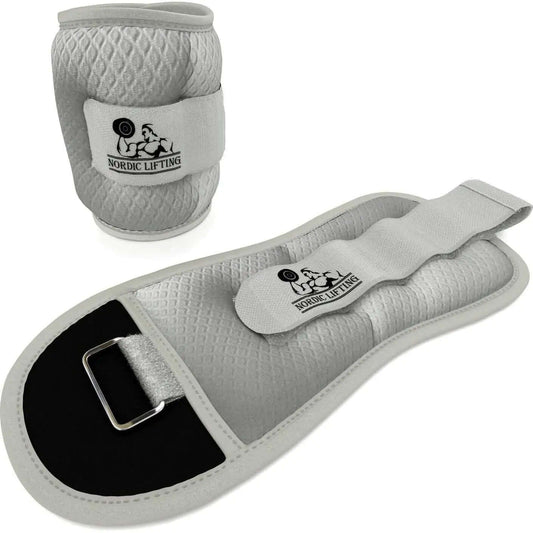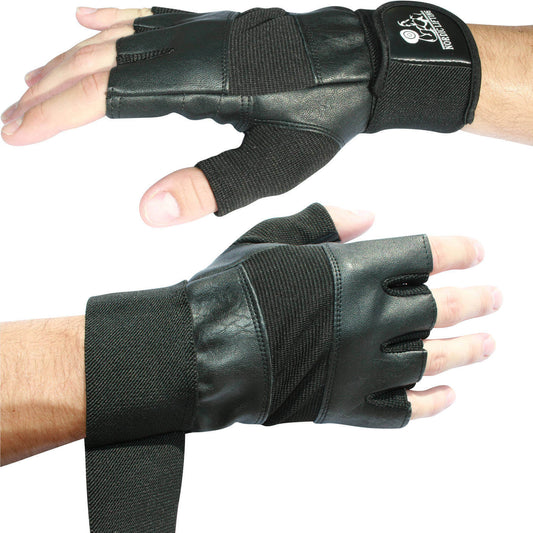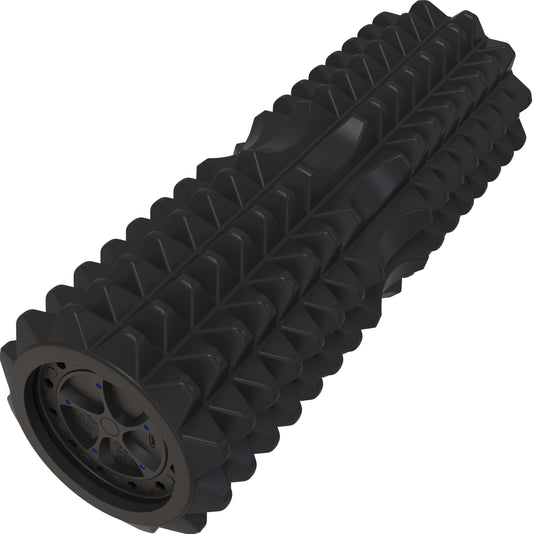Last Updated: April 11, 2025
After a challenging workout, many people seek ways to speed up their recovery and enhance their overall fitness. One effective method is spending time in a sauna. Using a sauna after a workout can lead to reduced muscle soreness and improved relaxation, making it a valuable addition to post-exercise routines.
The high heat in saunas helps relax muscles and improve blood circulation, which can promote faster recovery. Additionally, regular sauna use has been linked to various long-term health benefits, such as better cardiovascular health and increased endurance. Incorporating sauna sessions into a fitness routine can elevate the workout experience and contribute to overall well-being.
For those looking for a simple way to boost their fitness journey, saunas offer a relaxing and beneficial option that many may overlook. Embracing this practice not only addresses immediate recovery needs but may also enhance long-term health as part of a balanced lifestyle.
Key Takeaways
- Saunas can aid in muscle recovery after workouts.
- Regular sauna use supports overall health and fitness.
- Incorporating saunas into wellness routines offers lasting benefits.
Understanding Saunas
A sauna is a small room designed to provide a place for relaxation through heat. Saunas can come in various styles and designs, offering unique experiences.
Types of Saunas:
- Traditional Sauna: Uses dry heat from a stove or hot rocks. These rooms typically reach temperatures between 150°F to 195°F (65°C to 90°C).
- Infrared Sauna: Uses infrared lamps to warm the body directly without heating the air around. It operates at lower temperatures, around 120°F to 140°F (49°C to 60°C).
- Steam Room: Also known as a steam bath, it uses moist heat and operates at lower temperatures than dry saunas but can feel hotter due to humidity.
The main benefit of these heat therapies is to induce sweating. Sweating can help with the body's natural detoxification process.
Health Benefits:
- Improved Circulation: Heat causes blood vessels to expand, promoting better blood flow.
- Muscle Relaxation: Warmth can help ease muscle tension after physical activity.
- Stress Relief: The calming environment of a sauna can reduce stress and promote relaxation.
Many people enjoy using saunas after workouts to enhance recovery and achieve relaxation.
Physiological Effects of Sauna Use
Using a sauna after a workout creates several physiological responses in the body. These responses can lead to improved circulation, better heart health, and enhanced detoxification. Each effect contributes significantly to recovery and overall well-being.
Boost in Circulation and Oxygenation
Sauna use can lead to a noticeable boost in circulation. The heat causes blood vessels to expand, which enhances blood flow. As the heart rate increases, the body pumps more oxygen-rich blood to the muscles.
This increase in circulation helps deliver nutrients needed for recovery. When the muscles receive more oxygen, they can relax and heal faster. Additionally, improved blood circulation can reduce muscle soreness after intense workouts.
Regulation of Blood Pressure
Regular sauna sessions may help in regulating blood pressure. The heat exposure causes blood vessels to dilate, which can lower resistance in the vascular system. This dilation can lead to reduced blood pressure during and after sauna use.
Studies indicate that consistent sauna use may have long-term benefits for maintaining healthy blood pressure levels. For many, this helps reduce the risk of hypertension, a common concern for cardiovascular health.
Heart Health Considerations
Sauna bathing has positive implications for heart health. The elevated heart rate during a sauna session mimics moderate exercise. This effect can enhance cardiovascular function by increasing plasma volume and overall heart efficiency.
Regular sauna use may lower the risk of heart disease. Research shows that those who frequently use saunas may experience improved heart health markers. This indicates that saunas can be a supportive practice for maintaining a healthy heart.
Detoxification Through Sweating
Sweating in a sauna can promote detoxification. As the body heats up, it releases toxins through sweat. This can include heavy metals and other unwanted substances, supporting overall health.
This form of detoxification is important as it helps to clear out harmful agents. The sweating process can also improve skin health by unclogging pores and promoting a clearer complexion. It is a natural way to assist the body in eliminating toxins.
Implications for Hydration Levels
While saunas offer various benefits, they can also lead to dehydration if not managed properly. The heat causes the body to lose fluids quickly through sweating. It's important to stay hydrated before and after sauna use to maintain optimal hydration levels.
Individuals using saunas should drink water before entering and after leaving the sauna. This replenishing of fluids ensures that the body can continue to function well. Hydration is crucial for recovery, especially following an intense workout.
Saunas and Workout Recovery
Saunas can play a significant role in enhancing workout recovery. They help reduce muscle soreness, alleviate inflammation, and provide psychological benefits, contributing to a more effective recovery process.
Alleviating Muscle Soreness
Using a sauna after exercise can help alleviate muscle soreness. The heat from the sauna increases blood flow, which aids in delivering oxygen and nutrients to tired muscles.
This improved circulation helps in flushing out metabolic waste products, which are often responsible for soreness. The warmth also relaxes tight muscles, making it easier for them to recover.
Research suggests that sauna use can reduce delayed onset muscle soreness (DOMS). Regular sessions might lead to quicker recovery times after intense workouts.
Reducing Inflammation and Pain
Saunas can effectively reduce inflammation and pain after physical activity. The heat stimulates the body's natural healing processes, promoting the release of endorphins.
Endorphins act as natural painkillers, which can help ease joint pain and discomfort. Additionally, the relaxing environment of a sauna contributes to lowering stress levels, which can further help manage inflammation.
Studies indicate that the heat exposure can down-regulate inflammatory markers in the body. This means that using a sauna after workouts can help maintain optimal muscle recovery.
Controlling Overheating and Fatigue
Saunas can help control overheating and fatigue during recovery. Exercising raises the body’s core temperature, which, if not managed, can lead to fatigue.
Spending time in a sauna allows athletes to gradually acclimate their bodies to heat. This process can improve heat tolerance and enhance overall endurance in future workouts.
Furthermore, the heat in the sauna aids in lowering body temperature after intense exercise. This cooling effect can prevent excessive fatigue and allows for a more pleasant recovery experience.
Psychological and Stress-Related Recovery
The sauna environment provides significant psychological benefits. It offers a space for relaxation, helping diminish stress and anxiety levels after a workout.
The warmth promotes a calming effect, which can lead to improved mental clarity and a sense of well-being. This relaxation can also enhance the overall recovery process.
In addition, the heat can stimulate the release of endorphins, improving mood and promoting feelings of happiness. This combined effect makes sauna sessions valuable for both physical and mental recovery.
Sauna Benefits for Long-Term Health
Regular sauna use may provide several benefits that contribute to long-term health. These advantages include support for heart health, assistance with weight management, improvements in skin condition, positive effects for individuals with diabetes, and enhanced mental well-being.
Supporting Cardiovascular Health
Using a sauna can significantly support cardiovascular health. Exposure to high temperatures causes blood vessels to widen, enhancing blood circulation. This process can lead to lower blood pressure and improved heart function.
Research shows that regular sauna visits may reduce the risk of heart disease. People who frequent saunas experience lower rates of hypertension. This makes saunas beneficial for those with existing heart conditions or those at high risk.
Contribution to Weight Management
Saunas may play a role in weight management. While sitting in a sauna does not replace exercise, it can help with calorie burning. The heat increases heart rate, mimicking moderate exercise effects.
Regular sauna use can also promote muscle recovery, leading to more effective workouts. This helps individuals stick to their fitness plans, making weight loss more attainable. Furthermore, sweating helps remove excess water weight, which might lead to temporary weight loss.
Skin Health and Detoxification
Saunas contribute to skin health through enhanced blood flow and increased sweating. This process can help unclog pores and remove dirt, leading to clearer skin.
Sweating in a sauna also aids in detoxification. The body releases various toxins through sweat, which can promote healthier skin. Regular sauna sessions may reduce acne and improve overall skin texture, maintaining a youthful appearance over time.
Benefits for Diabetic Patients
Individuals with diabetes can benefit from sauna use. Regular exposure to heat may improve insulin sensitivity and regulate blood sugar levels.
Studies suggest that sauna bathing may lower diabetes-related risks. For people with type 2 diabetes, improved circulation and stress reduction can enhance overall health. Saunas offer a relaxing environment to aid in managing the stress that often accompanies chronic conditions.
Mental Health and Well-Being
Saunas are beneficial for mental health, promoting relaxation and reducing stress. The heat can help release endorphins, known as the "feel good" hormones.
Regular sauna visits may also improve mood and reduce symptoms of anxiety. People who use saunas often report feeling refreshed and rejuvenated. The calming atmosphere contributes to improved mental clarity and better overall well-being.
Considerations for Athletes and Active Individuals
Athletes and active individuals should be mindful of how sauna use can impact their training and recovery. Focusing on performance, hydration, and injury management can help them maximize the benefits of sauna sessions.
Optimizing Performance and Endurance
Using a sauna can enhance athletic performance and endurance. Heat exposure improves blood circulation and increases plasma volume. This can lead to better oxygen delivery to muscles during workouts.
Athletes may experience improved recovery from intense exercises, as saunas can reduce muscle soreness. They should consider timing sauna sessions to align with their training schedules. A post-workout sauna can help athletes relax, boost endorphin release, and promote a sense of well-being.
Managing Electrolyte Balance
Sauna use leads to increased sweating, which can result in significant fluid and electrolyte loss. Athletes must replace lost fluids to maintain performance levels. Consuming water and electrolyte-rich drinks before and after sauna sessions is essential.
Sodium, potassium, and magnesium are key electrolytes that should be included in their diet. Eating foods like bananas, coconut water, and sports drinks can help maintain balance. Awareness of symptoms like fatigue, cramps, and dizziness is crucial to prevent dehydration.
Injury Prevention and Management
Sauna sessions can support injury recovery and prevention. The heat helps to relax muscles and improves flexibility. This can make athletes less prone to strains and sprains during workouts and competitions.
In addition, heat can enhance the healing process for existing injuries by improving blood flow to those areas. Athletes should work closely with trainers to incorporate sauna use into their recovery plans. Regular sessions might reduce recovery time and promote a quicker return to training.
How to Safely Enjoy Sauna Post-Workout
Enjoying a sauna after a workout can enhance relaxation and promote recovery. However, certain precautions are essential to ensure a safe and beneficial experience.
Proper Hydration and Cooling Down
Before entering the sauna, it is crucial to hydrate properly. Drinking water helps to replace fluids lost during exercise and prevents dehydration. It is recommended to drink at least 16-20 ounces of water before the sauna session.
Cooling down after a workout is also important. Taking a warm shower helps to lower body temperature gradually. This transition prepares the body for the sauna's heat, reducing the risk of heat-related issues.
During the sauna session, he or she should also take breaks as needed. If feeling dizzy or lightheaded, it is best to exit the sauna immediately and rehydrate.
Sauna Etiquette and Considerations
Understanding sauna etiquette can enhance the experience for everyone. He or she should wear a bathing suit or towel to maintain cleanliness. It's polite to shower before entering to keep the sauna hygienic.
Silence or quiet conversation is generally encouraged, as many people use the sauna for relaxation or meditation. Avoid using electronics, such as phones, as they can be damaged by heat and moisture.
Never bring food or drinks into the sauna. This not only maintains cleanliness but also reduces distractions, allowing for a more peaceful environment.
Recognizing and Preventing Risks
Sauna sessions can pose risks, especially for those with pre-existing conditions. Individuals with chest pain, angina, or heat-related illnesses should consult a doctor before using a sauna.
Heatstroke is a significant risk, as it can occur if the body overheats. Symptoms include confusion, nausea, and rapid heartbeat. It is vital to recognize these signs and exit the sauna immediately if they occur.
To minimize risks, limit sessions to 15-20 minutes at a time. Regular breaks for rest and hydration will enhance well-being. By following these guidelines, he or she can enjoy the sauna safely while reaping its benefits.
Incorporating Sauna Into Your Wellness Routine
Using a sauna after a workout can greatly enhance relaxation and recovery. By integrating sauna sessions into a daily routine, individuals can experience improved stress management and muscle relief, contributing to overall well-being.
Relaxation and Stress Management
Saunas provide a peaceful environment that promotes relaxation. The heat helps to reduce muscle tension and encourages the body to release endorphins, which can uplift mood. Many people find that a few quiet moments in the sauna feel similar to meditation.
Breathing deeply in this warm space helps lower cortisol levels, a key hormone related to stress. Regular sauna use can serve as an effective stress management technique, offering a break from daily life. People looking to unwind should consider adding this practice to their routine.
Frequency and Duration for Optimal Benefits
For the best results, individuals should use the sauna several times a week. Regular sessions of about 15 to 30 minutes can maximize recovery benefits.
Heat exposure stimulates circulation and enhances muscle recovery. Most experts suggest starting with 2-3 sessions per week, gradually increasing as comfort levels improve. Paying attention to the body's signals is crucial; anyone feeling dizzy or overly hot should exit the sauna promptly.
Integrating Sauna with Other Wellness Practices
Combining sauna use with other wellness practices enhances its benefits. Stretching or gentle yoga before or after the sauna can improve flexibility and provide additional muscle relief.
Integrating infrared heat saunas can target specific areas of concern, such as muscle soreness or skin issues like psoriasis. Hydration is equally important; drinking water after sauna sessions ensures proper recovery and well-being.
By linking sauna sessions with healthy eating, regular exercise, and mindfulness practices, individuals can create a comprehensive wellness routine that's effective and sustainable.
Frequently Asked Questions
Using a sauna after a workout can lead to various benefits, including improved recovery, muscle relaxation, and increased blood flow. It's essential to understand the best practices and potential downsides of sauna use in this context.
How long should one stay in the sauna to maximize the post-workout benefits?
Most experts recommend staying in the sauna for about 15 to 30 minutes after a workout. This duration allows for adequate heat exposure, which can enhance recovery by improving blood circulation and reducing muscle soreness.
Can using a sauna after exercising help with muscle growth?
Sauna use may support muscle growth indirectly by promoting better recovery. The increase in blood flow can help deliver essential nutrients to muscles, aiding in repair and growth. However, it does not directly increase muscle mass.
What are the potential downsides of using a sauna immediately after a workout?
One potential downside of using a sauna right after a workout is dehydration. Intense sweating can lead to fluid loss, which may hinder recovery if not replenished. It’s important to drink water before and after sauna use to stay hydrated.
Are there any specific advantages to using the sauna before working out instead of after?
Using a sauna before a workout can help warm up muscles and joints, potentially reducing the risk of injury. It may also improve flexibility and prepare the body for physical activity. However, benefits after a workout are primarily related to recovery.
What impact does a 10-minute sauna session have on post-exercise recovery?
A 10-minute sauna session can still provide some benefits for post-exercise recovery. While it may not be as effective as longer sessions, even a short stay can increase blood flow and aid in muscle relaxation, helping to alleviate soreness.
How does sauna use post-exercise affect weight loss efforts?
Sauna use can create a temporary increase in weight due to fluid loss through sweating, but this is not fat loss. The heat can boost metabolism slightly, but sustainable weight loss is best achieved through a balanced diet and regular exercise rather than sauna use alone.










